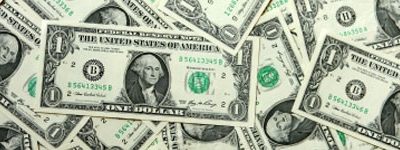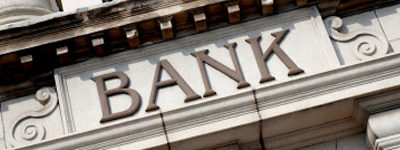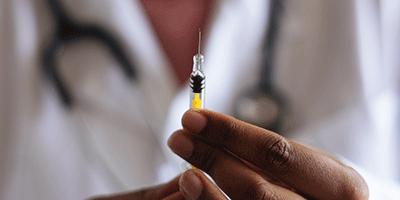%
Jubak’s Picks Performance 1997-2019
Jubak’s Picks
Buy and hold? Not really.
Short-term trading?
Not by a long shot.
So what is the stock-picking style of The Jubak’s Picks portfolio?
Click to expand...
Click to View the Jubak’s Picks Portfolio
I try to go with the market’s momentum when the trend is strong and the risk isn’t too high, and I go against the herd when the bulls have turned piggy and the bears have lost all perspective. What are the results of this moderately active — the holding period is 12 to 18 months — all-stock portfolio since inception in May 1997? A total return of 584% as of December 31, 2019. That compares to a total return on the S&P 500 stock index of 335% during the same period.
%
Top 50 Stocks Performance 2019
Top 50 Stocks
This long-term, buy-and-holdish portfolio was originally based on my 2008 book The Jubak Picks.
Trends that are strong enough, global enough, and long-lasting enough to surpass stock market averages.
Click to expand...
Click to view the Top 50 Stocks Portfolio
In The Jubak’s Picks Portfolio I identified ten trends that were strong enough, global enough, and long-lasting enough to give anyone who invested in them a good chance of beating the stock market averages.
To mark the publication of my new book on volatility, Juggling with Knives, and to bring the existing long-term picks portfolio into line with what I learned in writing that book and my best new ideas on how to invest for the long-term in a period of high volatility, I’m completely overhauling the existing Top 50 Picks portfolio.
You can buy Juggling with Knives at bit.ly/jugglingwithknives
%
Dividend Income Performance 2021
Dividend Income
Every income investor needs a healthy dose of dividend stocks.
Why bother?
Why not just concentrate on bonds or CDs?
Click to expand...
Click to view the Dividend Income Portfolio
Because all the different income-producing assets available to income investors have characteristics that make them suited to one market and not another. You need all of these types of assets if you’re going to generate maximum income with minimum risk as the market twists and turns.
For example: bonds are great when interest rates are falling. Buy early in that kind of market and you can just sit back and collect that initial high yield as well as the capital gains that are generated as the bonds appreciate in price with each drop in interest rates.
CDs, on the other hand, are a great way to lock in a yield with almost absolute safety when you’d like to avoid the risk of having to reinvest in an uncertain market or when interest rates are crashing.
Dividend stocks have one very special characteristic that sets them apart from bonds and CDs: companies raise dividends over time. Some companies raise them significantly from one quarter or year to the next. That makes a dividend-paying stock one of the best sources of income when interest rates start to rise.
Bonds will get killed in that environment because bond prices will fall so that yields on existing bonds keep pace with rising interest rates.
But because interest rates usually go up during periods when the economy is cooking, there’s a very good chance that the company you own will be seeing rising profits. And that it will raise its dividend payout to share some of that with shareholders.
With a dividend stock you’ve got a chance that the yield you’re collecting will keep up with rising market interest rates.
But wouldn’t ya know it?
Just when dividend investing is getting to be more important—becoming in my opinion the key stock market strategy for the current market environment—it’s also getting to be more difficult to execute with shifting tax rates and special dividends distorting the reported yield on many stocks.
I think there’s really only one real choice—investors have to pull up their socks and work even harder at their dividend investing strategy. That’s why I revamped the format of the Dividend Income portfolio that I’ve been running since October 2009. The changes aren’t to the basic strategy. That’s worked well, I think, and I’ll give you some numbers later on so you can judge for yourself. No, the changes are designed to do two things: First, to let you and me track the performance of the portfolio more comprehensively and more easily compare it to the performance turned in by other strategies, and second, to generate a bigger and more frequent roster of dividend picks so that readers, especially readers who suddenly have a need to put more money to work in a dividend strategy, have more dividend choices to work with.
Why is dividend investing so important in this environment? I’ve laid out the reasons elsewhere but let me recapitulate here. Volatility will create repeated opportunities to capture yields of 5%–the “new normal” and “paranormal” target rate of return–or more as stock prices fall in the latest panic. By using that 5% dividend yield as a target for buys (and sells) dividend investors will avoid the worst of buying high (yields won’t justify the buy) and selling low (yields will argue that this is a time to buy.) And unlike bond payouts, which are fixed by coupon, stock dividends can rise with time, giving investors some protection against inflation.
The challenge in dividend investing during this period is using dividend yield as a guide to buying and selling without becoming totally and exclusively focused on yield. What continues to matter most is total return. A 5% yield can get wiped out very easily by a relatively small drop in share price.
Going forward, I will continue to report on the cash thrown off by the portfolio—since I recognize that many investors are looking for ways to increase their current cash incomes. But I’m also going to report the total return on the portfolio—so you can compare this performance to other alternatives—and I’m going to assume that an investor will reinvest the cash from these dividend stocks back into other dividend stocks. That will give the portfolio—and investors who follow it—the advantage of compounding over time, one of the biggest strengths in any dividend income strategy.
What are some of the numbers on this portfolio? $29,477 in dividends received from October 2009 through December 31, 2013. On the original $100,000 investment in October 2009 that comes to a 29.5% payout on that initial investment over a period of 39 months. That’s a compound annual growth rate of 8.27%.
And since we care about total return, how about capital gains or losses from the portfolio? The total equity price value of the portfolio came to $119,958 on December 31, 2012. That’s a gain of $19,958 over 39 months on that initial $100,000 investment or a compound annual growth rate of 5.76%.
The total return on the portfolio for that period comes to $49,435 or a compound annual growth rate of 13.2%.
How does that compare to the total return on the Standard & Poor’s 500 Stock Index for that 39-month period? In that period $100,000 invested in the S&P 500 would have grown to $141,468 with price appreciation and dividends included.) That’s a total compounded annual rate of return of 11.26%.
That’s an annual 2 percentage point advantage to my Dividend Income portfolio. That’s significant, I’d argue, in the context of a low risk strategy.
Portfolio Related Posts
Reminder: Today is the deadline for selling to take tax losses in 2020
Sell today if you’re looking to sell to generate tax losses for 2020. After today, December 29, you can still sell but the losses will count for the 2021 tax year.
Corning picks up sales/ margin gains from supply crunch in high-tech glass
“While Corning (GLW) shares have rallied, we believe that a ‘stronger for longer’ consumer trend augurs well for underlying demand drivers in Corning’s business segments exposed to consumer electronics, with further tightening in the glass supply demand environment due to outages at a major competitor,” wrote Citigroup analyst Jim Suva in a note to clients last week.There’s a shortage of the high-tech glass used in video displays, mobile phones, and cars. One reason is a power outage that damaged manufacturing equipment at a Japanese factory of Corning rival Nippon Electric Glass. But another reason is a pick up in demand for consumer electronics products.
Buying Dow tomorrow in my Dividend Portfolio, Pick #8 in my Special Report on Dividend Stocks on JubakAM.com
Dow (DOW) certainly fits the dividend template that I’ve explained in my Special Report: “10 Dividend Stocks that are beating the risky rockets. The stock yields 5.26% after a 0.20% gain today December 9. That compares to a yield of just 2.8% in July 2017 and 3.1% in December 2016. The stock also shows a 1.06% price to sales ratio on today. I think we’re looking at a cheap stock. Tomorrow I’l be adding it to my Dividend Portfolio.
Adding Citigroup to my Dividend Portfolio as 7th pick in my JubakAM.com Dividend Stocks Special Report
I’m adding Citigroup, the most recent pick in my JubakAM.com Dividend Stocks Special Report, to my Dividend Portfolio tomorrow
Buying Omnicom, the first of my post-vaccine dividend picks in my JubakAM.com Special Report, for my Jubak Picks Portfolio today
As of Monday, December 7, I’m adding shares of Omnicom to my Jubak’s Picks Portfolio. The stock’s 4% yield indicates a company that is undervalued and ready to outperform during the post-vaccine rally.
Dividend Portfolio ahead 14.19% for 2020…so far
As of December 1, the total 2020 return for Dividend Portfolio was 14.19%.
Eversource is my fifth utility pick in my Special Report on dividend stocks (on my JubakAM.com subscription site)–I added it to my Jubak Picks portfolio on Monday
Today, I made Eversource the fifth pick in my Special Report “Dividend Stocks that will beat the risky rockets” on my JubakAM.Com subscription site. On Monday, December 7, I added the shares to my Jubak Picks portfolio. Eversource pays a 2.65% dividend.
Pfizer’s warning on logistics difficulty in delivering vaccine stalls stocks at end of trading
Pfizer (PFE) stock tumbled Thursday after the company reportedly slashed its expectations for coronavirus vaccine deliveries in 2020 due to supply-chain issues. “Scaling up the raw material supply chain took longer than expected,” a company spokeswoman told the Wall Street Journal.











